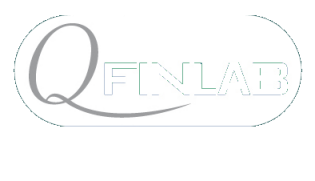MATHEMATICAL FINANCE II (Master Level, Mathematical Engineering)
Prof. Alessandro Calvia
AIM of the Course:
The aim of the course is to make the students familiar with the mathematical and, more in general, with the quantitative methods adopted in describing the dynamics of financial markets and in valuating and hedging financial derivatives.
SUBJECTS of the Course:
The No Arbitrage Principle in a continuous time setting. The fundamental Theorems of Asset Pricing. The Geomeric Brownian motion as a limit of a binomial random walk. The Black-Scholes-Merton analysis and the Black-Scholes formula for European Options. The Black-Scholes equation solved via PDE methods and via the Feynman-Kac representation formula. Complete and incomplete market models. Completeness of the Black-Scholes model and its relation with the martingale representation theorem. Hedging in the Black-Scholes setting: the Greeks.
Portfolio dynamics and self-financing strategies. The optimal control problems in the Black-Scholes setting: the optimal-consumption-investment problem and the related Hamilton-Jacobi-Bellman equation. The two-funds theorem: the case with no risk-free asset and the case with a risk-free asset. The Merton problem and its generalizations.
Early exercise features and American option pricing. The free boundary problem for the Black-Scholes equation and its formulation as an optimal stopping problem.
Exotic and Path-Dependent options: Barrier, Lookback, Asian options valuation for the lognormal model. The multidimensional BS model and the valuation of basket options. Forward and Futures: Black-76 formula for options on futures. Currency derivatives.
Fixed-Income derivatives. Short rate models and bond valuation: affine models and affine term structures. The Vasicek, Ho-lee, Cox-Ingersoll-Ross, Hull and White Models. Forward rate models: the Heath-Jarrow-Morton approach. The LIBOR market model. Valuation of Caps, Floors and Swaptions in the LIBOR market model.
Valuation of forward and futures in stochastic interest rate models.
Limitations of the Black-Scholes model: empirical evidences on lorgeturns distributions: fat tails, aggregational Gaussianity, volatility clustering and the leverage effect. Qualitative discussion on the volatility smile and the volatility term structure of option prices.
The course will include exercise sessions in which examples and applications of the general theory to specific concrete cases will be provided and discussed.
EXAMINATION PROCEDURE. The exam will be perormed in two steps: a written part, mainly related to exercises and applications, and an oral part mainly related to the general theory.
REFERENCES::
1) T. Bjork, ARBITRAGE THEORY IN CONTINUOUS TIME, Oxford University Press, 4th Ed., 2009.
2) E. Rosazza Gianin, C. Sgarra, MATHEMATICAL FINANCE: THEORY REVIEW AND EXERCISES, Springer, 2013.
PREVIOUS KNOWLEDGE: Basic notions of probability, mathematical statistics, differential and integral calculus; basic notions on stochastic calculus: Ito integral, Ito lemma, stochastic differential equations. Basic notions on PDE: the diffusion equation and its fundamental solution. Basic definitions of the most popular financial products available on the market.
LANGUAGE: ENGLISH.

